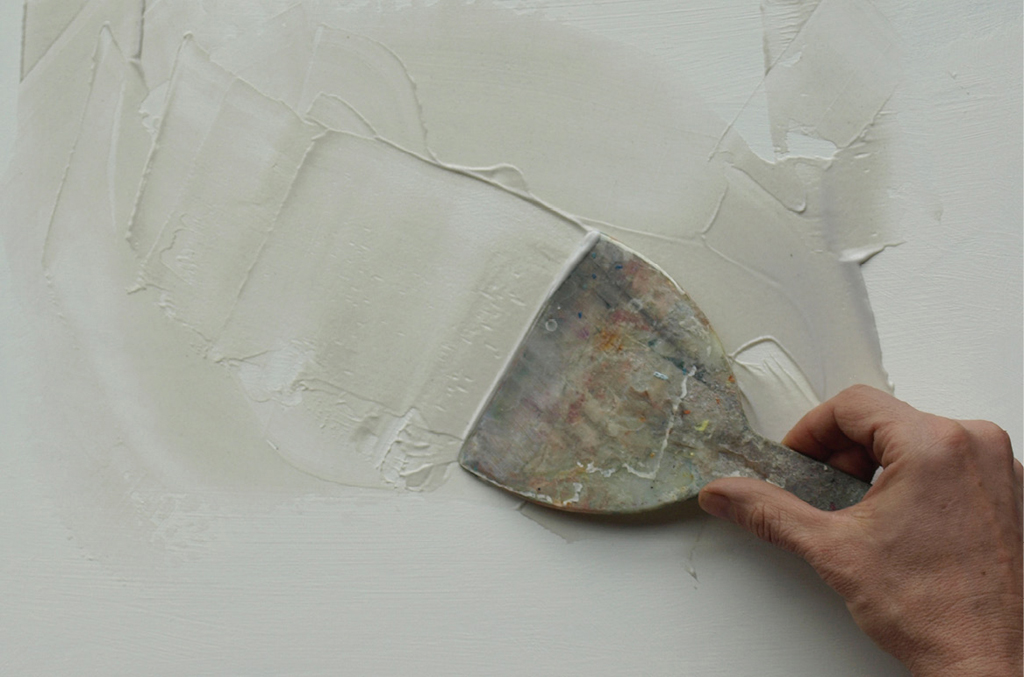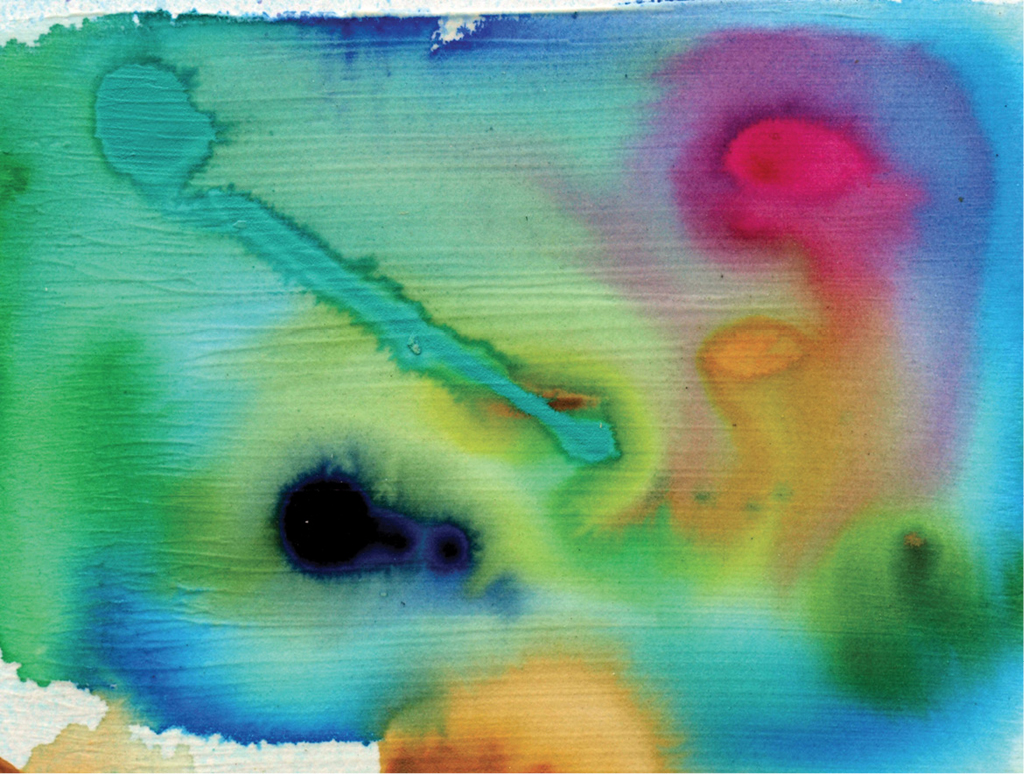
Colored halos are created in this technique using wet paint drops on a wet washy surface. A great technique for evocative backgrounds, translucent color fields or abstract paintings.
Paint
Several fluid acrylic paint colors
Substrate
Any primed painting surface
Tools
Painting knife or other spreading tool, a soft flat paintbrush, palette, spray bottle
Products
An absorbent acrylic paste
Other
Water, water container, paper towels or rags

STEP 1 Apply Paste to the Surface
Using a knife, spatula or other spreading tool apply an absorbent acrylic paste thinly over entire surface. The more absorbent the paste the greater the bleed and halo effects. Here, Acrylic Ground for Pastel is applied fairly smoothly on a panel primed with gesso. Let dry.

STEP 2 Apply Background Washes
On a palette, dilute acrylic paint colors separately in a 1:3 ratio of paint to water to create several colored washes. Wet the surface with water using a spray bottle or brush, then brush apply or pour washes onto the wet surface to create a blended background. Here two colored washes are applied in separate areas using Permanent Green Light and Phthalo Blue (Green Shade) naturally bleeding together in places. While still wet, continue to the next step.

STEP 3 Add Drops of Fluid Paint
Apply drops of fluid paint, directly onto the wet background washes. As an alternative to using fluid paints, mix heavy body paints with water in a ratio of 3:1 water to paint. Experiment with water-to-paint ratios for both background washes and halo colors to find your preference.

Fluid paint colors were dropped onto the wet wash using Anthraquinone Blue, Hansa Yellow Medium, Yellow Ochre and Cobalt Teal.

Absorbent pastes are gritty and naturally textural, and when applied as a surface or ground, allow paint to absorb into its layers, offering the most control for the halo-staining technique. For alternate effects use nonabsorbent (or glossy) surfaces, which enable color washes to separate, creating variegated effects as pictured in this example, using gloss gel instead of the paste in Step 1, Technique 33. For another example, see Technique 34.
ROCK CLIFFS
Nancy Reyner
Acrylic on panel
8" × 10" (20cm × 25cm)